2022-05-10
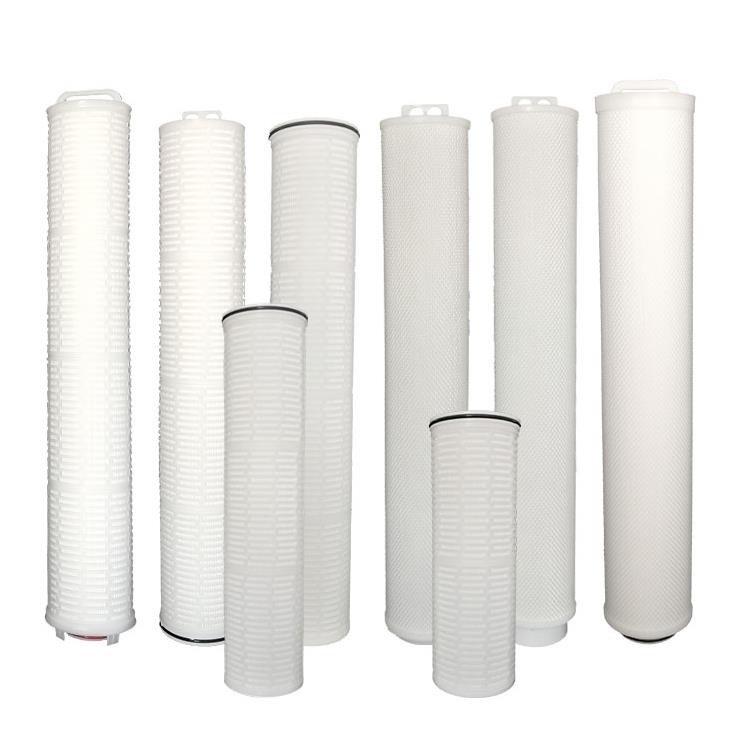
Materials, characteristics and functions of various filter elements
PP melt blown filter element material: it is made of food grade polypropylene with international general gradient diameter process. After heating and melting, spraying, traction and receiving molding, the fiber forms a three-dimensional microporous structure in the process of thermal bonding. The microporous pore size is distributed in a gradient from inside to outside, integrating surface and deep coarse and fine filtration. Features: the outer fiber is thick, the inner fiber is thin, the outer layer is loose, and the inner layer is tight. The unique gradient deep filtration forms a three-dimensional slag filtering effect, which has the characteristics of high porosity, high interception rate, large pollutant carrying capacity, large flow and low pressure drop. PP melt blown filter element has high cleanliness and no pollution to water quality. Resistant to acid, alkali and other chemical reagents and organic solvents. PP melt blown filter element has high strength. When the pressure difference between inlet and outlet of filtration is 0.4MPa, the filter element will not deform. Function: the filtration accuracy is divided into 1 micron and 5 microns. The raw water shall be preliminarily filtered to remove suspended solids, sediment, rust, colloid and other substances in the water, so as to form RO membrane and feed water.
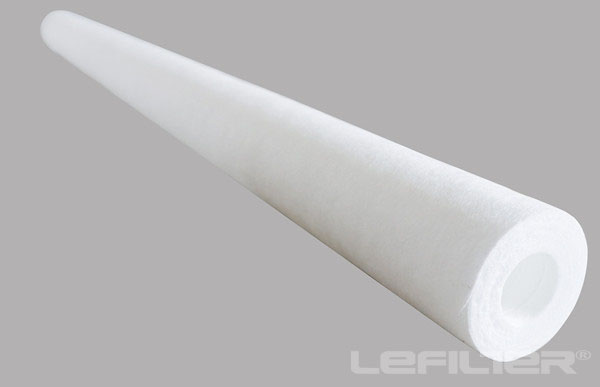
Material of winding filter element: its yarn materials include polypropylene fiber, acrylic fiber, absorbent cotton fiber, etc. Features: it is made of textile fiber yarn with good filtration performance, which is precisely wound on the porous skeleton. When winding, filter elements with different accuracy can be made by controlling the winding tightness and dilute density of yarn. Function: it can remove suspended solids and particulate impurities in water.
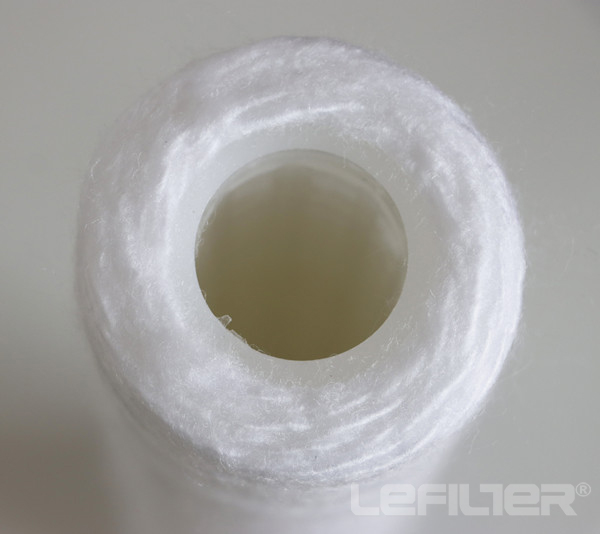
Folding filter element material: it is a precision filter device made of polypropylene thermal spray fiber membrane, nylon, PTFE microporous filter membrane and other filter media. Features: the sealing of the end cover of the filter element and the connection of the overall structure adopt hot-melt bonding, which has the advantages of small volume, large filtering area and high precision. Function: the filtering accuracy is from 0.1 micron to 60 microns. It can remove visible particles and suspended solids in water.
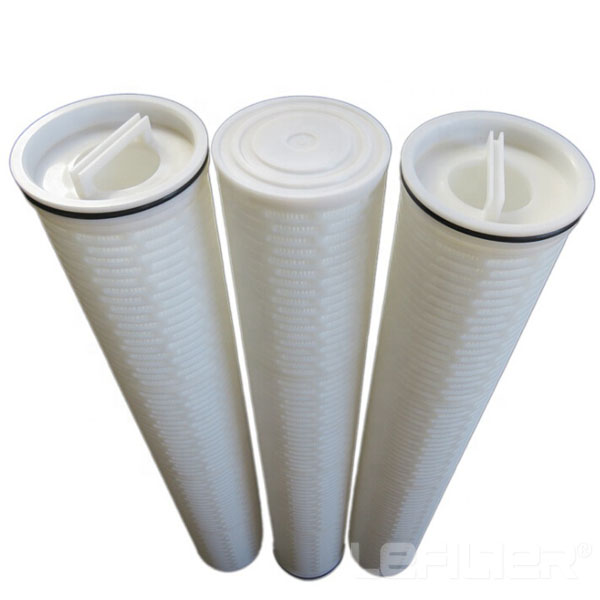
Stainless steel mesh filter element material: stainless steel features: high strength, good rigidity, uniform precision, and can be used repeatedly. Function: the filtration accuracy is from 30 to 80 microns, which can remove visible particles and suspended solids in water.
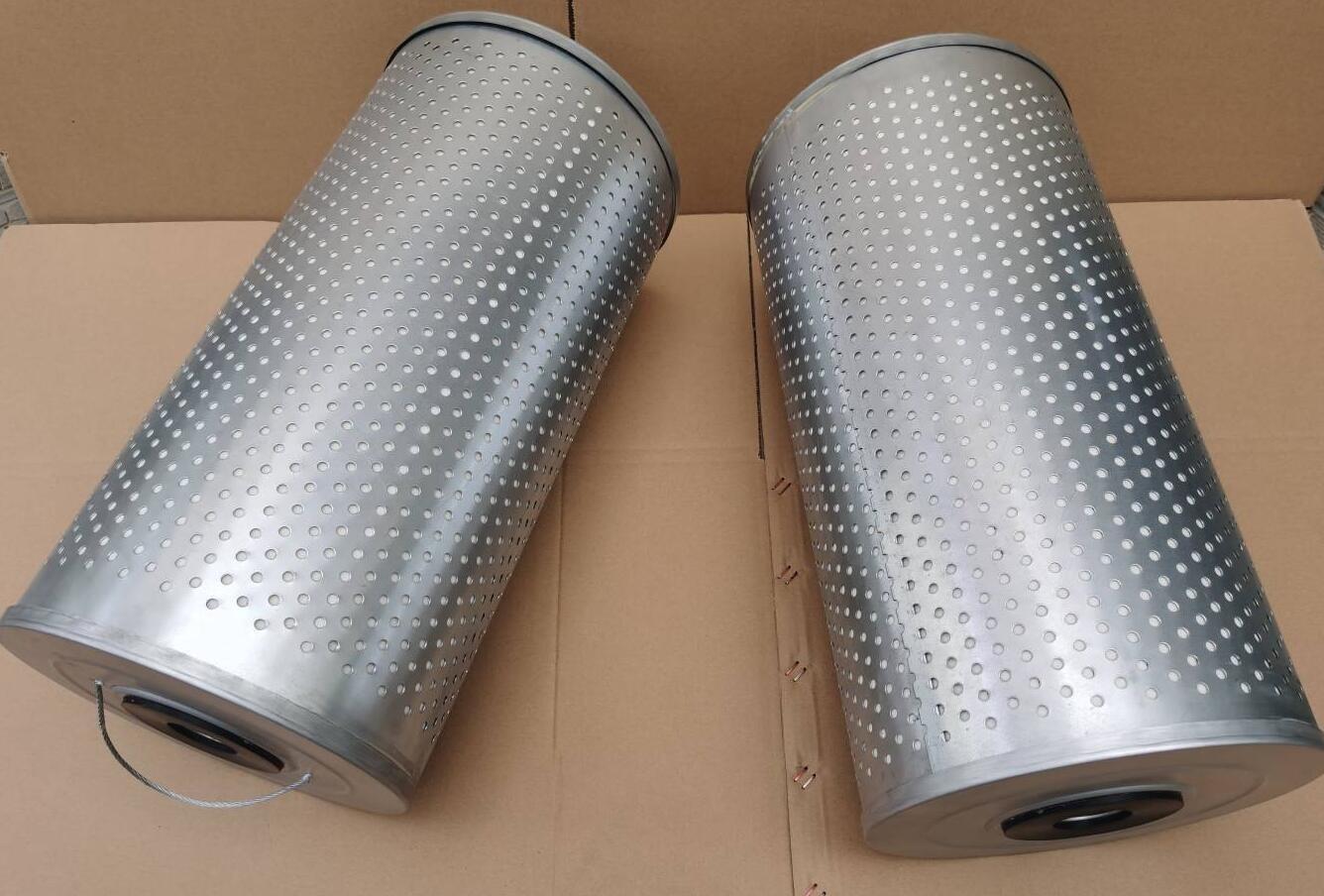
Granular activated carbon filter element (UDF) material: it adopts non-toxic, tasteless and efficient coconut shell activated carbon and coal activated carbon as the main body, supplemented by edible material adhesive, which is processed and formed by special process. Features: the shell is made of food grade ABS plastic and bonded with ultrasonic welding technology. Function: adsorb organic matter, chemical pesticides, residual chlorine, heterochromatic odor, etc. in water.
Compressed activated carbon filter element (CTO) material: coal based carbon with iodine above 900 is used as filter material. Features: after three times of iron sulfur removal processing, or high-quality plant carbon, sintered and compressed with food grade adhesive. The inside and outside of the compressed activated carbon are respectively wrapped with a layer of non-woven fabric with filtering function to ensure that the carbon core itself will not drop carbon powder. Both ends of the carbon core are equipped with soft nitrile rubber gaskets to make the carbon core fit into the filter cartridge with good sealing performance. Function: remove residual chlorine, chemical pesticides, different colors and peculiar smell of water, and filter fine impurities.
Post activated carbon filter element (t33) material: high quality coconut shell activated carbon is used as filter material. Features: some products are treated with high-quality activated carbon filter material loaded with silver. The sterilization principle of silver atom is used to sterilize and inhibit bacteria on the pure water pipeline of water purifier, so as to ensure the safety and health of water quality. Function: adsorb impurities and peculiar smell in water, improve the taste of water and eliminate peculiar smell.
Ceramic filter element material: it is often made of natural diatomite. Features: it can be brushed repeatedly or polished with sandpaper. When pre filtering, it has high precision and long service life. Function: it can remove bacteria, fine particle impurities and viruses in water.
Ultrafiltration membrane filter element (UF) material: mostly polyvinyl chloride, polyethersulfone and polyacrylonitrile. Features: a membrane process between microfiltration and nanofiltration, which takes the pressure difference on both sides of the membrane as the driving force and the ultrafiltration membrane as the filter medium. Under a certain pressure, when water flows through the membrane surface, only water and small molecular substances smaller than the pore diameter of the membrane are allowed to pass through, so as to achieve the purpose of purification, separation and concentration of the solution. Function: it can remove protein, bacteria, colloid and suspended solids in water.
Nanofiltration membrane filter element (NF) material: common materials are polyamide, acetate fiber, etc. Features: it is a membrane separation technology between ultrafiltration and reverse osmosis. Its requirement for water pressure is lower than that of reverse osmosis membrane. It can operate efficiently without power under the condition of high household water pressure (greater than 0.25MPa). Function: it can remove more than divalent ions, trace volatile organic compounds, three pathogenic substances, etc.
Reverse osmosis membrane filter element (RO) material: common materials are nitrocellulose, cellulose acetate and polyamide. Features: the reverse osmosis membrane can only pass through the solvent (usually water) to intercept the selective permeability of ionic substances or small molecular substances, and the static pressure on both sides of the membrane is used as the driving force to realize the membrane process of liquid mixture separation. It has many advantages, such as high water quality, low operation cost, no pollution, convenient operation and reliable operation. Function: remove soluble metal salts, organics, bacteria, colloidal particles and calorific substances, which can intercept all ions. Ionic resin filter element material: it is a porous and insoluble exchange material. Features: the regeneration principle of resin filter element is that dilute brine solution flows through the resin and contacts with resin beads containing calcium and magnesium ions. Although calcium and magnesium ions have stronger electricity than sodium ions, concentrated salt solutions contain millions of weakly charged sodium ions, which have the ability to select fewer calcium and magnesium ions. When calcium and magnesium ions are replaced (exchanged), eventually, the exchange position is occupied by sodium ions. Function: it is mainly used for softening hard water, desalting water, extracting and separating rare element antibiotics from pure water, etc.
KDF filter element material: high purity copper zinc alloy material. Features: effectively reduce or remove chlorine and heavy metals in water through electrochemical oxidation-reduction (electron transfer) reaction, and inhibit the growth and reproduction of microorganisms in water. Function: it can remove chlorine, organic compounds and heavy metals in water and prevent the formation of carcinogenic trihalomethane